Agency strategic partnership could be your ticket to the fast lane.
44% of businesses seek alliances for new ideas, insights, and innovation. Still, in the business world, it’s not just about getting to the other side; it’s about who you walk with.
This blog post explores why agency strategic partnerships are skin to power couples and how your agency can make the most of it.
Let’s dive in.
What is a Strategic Partnership and How Will It Help My Agency?
A strategic partnership is when a couple of businesses choose to team up. They join forces and strengths to hit a series of goals and even pull off industry-disruptive innovations.
Starting a strategic partnership can help your agency:
- Expand business reach.
- Build credibility.
- Improve service offerings.
- Share risks and resources with strategic agency partners.
Example of strategic partnership
The collaboration between Spotify and Starbucks, initiated in 2015, is one of the most popular partnership examples.
The partnership combined Spotify’s digital music streaming with Starbucks’ expansive coffee shop network. Forbes called it a “marriage made in double-shot, platinum-hit heaven.”
What is an Agency Strategic Partnership Agreement?
An agency strategic partnership agreement defines terms, roles, responsibilities, and contributions.
The document must align business objectives and strategies, covering aspects like:
- Purpose
- Resource sharing
- Financial arrangements
- Duration
- Performance metrics
- Confidentiality
- Dispute resolution
- Legal compliance
- Termination
The more details your strategic partnering agreement includes, the more successful the collaboration could be.
Importance of Strategic Partnerships
A solid strategy can be crucial to your business’s growth and sustainability.
Here at Prospecting on Demand, we’ve helped 1000+ agencies make it to the next level. Part of the process involved guiding them on leveraging partnerships by:
Enhancing service capabilities and expanding offerings
When you merge expertise, you can offer more comprehensive solutions and:
- Attract a broader client base, catering to diverse needs.
- Gain a competitive edge, differentiating your company from rivals.
Example: A digital marketing agency collaborating with a web development firm to provide end-to-end digital solutions.
Generating leads and increasing client base
You generate new leads from your partner’s client base as you cross-promote, but you also:
- Extend your market reach, especially into regions or sectors previously inaccessible.
- Boost your reputation and credibility, attracting new clients.
Example: A real estate agency collaborating with a home staging company to provide complex real estate solutions.
Creating cost-saving opportunities through shared resources
Tapping into a new pool of resources will ease your organization’s financial load as you:
- Save infrastructure and technology costs.
- Purchase in bulk and run joint marketing or R&D efforts.
- Share best practices and business processes.
Example: A graphic design agency collaborating with a digital marketing agency to offer more comprehensive services at lower costs.
Gaining access to specialized technical talent
Your company accesses specialized skills and knowledge you lack internally, and you:
- Can take up on new projects.
- Have flexibility to scale operations without hiring full-time staff.
- Develop more agile and responsive business practices.
Example: A PR agency collaborating with a digital analytics firm to exchange specialized skills and knowledge.
Fostering innovation and staying ahead in the industry
A partnership will strengthen your company to roll with the punches in a changing industry and:
- Pool resources to respond to market shifts more effectively.
- Gain valuable insights into industry trends and competitor strategies.
Example: A software development agency partnering with an emerging artificial intelligence (AI) startup.
Types of Strategic Partnerships
Different strategic partnerships offer unique benefits and opportunities. When you’re unsure which way to go, brand partnership agencies could help you navigate the options.
Agency partnerships within the same industry
Agencies in similar fields, like marketing or advertising, collaborate to expand their market reach and service capabilities:
- Sharing resources like technology and client lists.
- Forming joint ventures for larger projects.
Agency partnerships example: A social media marketing agency partnering with an SEO specialist.
Partnerships with software vendors/providers
Businesses partner with software vendors to boost their technological capabilities and increase operational efficiency by:
- Developing custom software solutions.
- Improving integration of technology systems.
Partnership with software provider example: A recruitment agency partnering with a software vendor that provides an advanced Applicant Tracking System (ATS).
Cross-industry partnerships for complementary services
Companies across different industries collaborate to offer complementary services and grow by:
- Accessing new markets.
- Implementing innovative solutions by combining diverse expertise.
Cross-industry partnership example: A travel agency partnering with a wellness retreat center for package deals.
Strategic alliances with industry influencers or associations
Forming partnerships with influencers or industry associations can significantly enhance a brand’s credibility and awareness by:
- Being endorsed by influencers.
- Effectively reaching target audiences.
Strategic alliance example: A fashion marketing agency partnering with a well-known fashion influencer.
Types of Partnership Agreements
Partnership agreements define collaboration terms. The most common partnership models are:
- General partnership agreement
Partners share business management and are equally liable for debts.
- Limited partnership agreement
A limited partnership is common with short-term ventures and involves two roles: a general manager and a limited partner. One party manages the business and is liable for debts; the other has little involvement and liability.
- Limited liability partnership (LLP)
LLPs are common in industries like law and accounting and limit each partner’s liability to their actions and the partnership’s debts.
- Strategic alliance agreement
Strategic alliances work best for specific projects or resource sharing, helping you avoid forming a new entity and detailing roles, contributions, revenue, or cost sharing.
- Joint venture agreement (JV)
JVs work best for parties that temporarily collaborate on a specific venture and must clarify contributions, management, profit sharing, etc.
- Silent partnership agreement
Silent partners invest capital without engaging in daily operations.
- Equity partnership agreement
This partnership is common in law firms where partners own equity, covering profit distribution, ownership stakes, and management rights.
- Non-equity partnership agreement
A non-equity partnership involves managerial roles and removes the need for equity ownership, specifying salaries, bonuses, or other compensation.
Looking to adopt a particular strategic partnership model? Agency partnership legal advice is often recommended to ensure comprehensive coverage of all partnership aspects.
11 Best Practices for Successful Partnerships
Strategic partner management is all about nailing the teamwork game, like:
- Talking things out clearly
- Aiming for the same targets
- Rolling with the changes together
- High-fiving each other for the wins
Here’s how to find the right agency partner.
1. Identify potential partners
Research and identify potential partners that match two essential criteria:
- Have complementary strengths and resources.
- Align with your business values, goals, and objectives.
2. Evaluate compatibility
Assess potential partners’ compatibility regarding:
- Business culture
- Ethics
- Long-term goals
3. Negotiate terms, responsibilities, and expectations
Avoid later conflicts by negotiating and defining each partner’s:
- Terms
- Roles
- Obligations
- Expectations
4. Create a partnership agreement
Draft a formal partnership agreement that outlines all agreed-upon terms, including:
- Financial arrangements
- Roles
- Responsibilities
- Exit strategies
5. Plan for effective communication
Establish a communication plan that specifies:
- How partners will communicate
- Through what channels
- How often
6. Define clear goals and objectives
Set SMART goals and objectives for the partnership, ensuring all parties:
- Align
- Work towards the same pursuits
7. Create an ideal partner profile
Develop a profile of a perfect partner, including:
- Industry expertise
- Resources
- Market presence
- Other complementary attributes
8. Craft a compelling proposal for partnership
Approach potential partners with a clear proposal that outlines how the partnerships will:
- Benefit all parties
- Align with objectives
- Bring value
9. Draft a comprehensive partnership agreement
Ensure the partnership agreement covers all aspects, but especially:
- Dispute resolution
- Confidentiality
- Intellectual property rights
10. Ensure open communication and regular evaluation
To address issues promptly and adapt strategies as needed:
- Maintain open lines of communication for feedback.
- Schedule regular evaluations of the partnership’s progress.
11. Manage challenges and conflicts effectively
Develop a proactive attitude towards conflict identification and management:
- Always look out for trouble before it happens.
- Have a plan ready for dealing with arguments.
How to Measure Your Partnership Impact
Figuring out how well your partnership is doing is vital to knowing if it’s worth it. To make the right choices, find ways to improve, and stay on track with your big goals, follow these steps:
| What to do: | How to do it: |
| 1. Set objectives & KPIs. | Establish objectives aligned with business goals. Define KPIs like revenue growth and customer acquisition. |
| 2. Run financial analysis. | Compare revenue and profit margins. Calculate your ROI pre- and post-partnership. |
| 3. Monitor customer metrics. | Check customer acquisition, retention, and satisfaction. |
| 4. Do market research. | Use surveys and web analytics. |
| 5. Improve operational efficiency. | Look for improvements in production times, costs, and supply chain management. |
| 6. Innovate. | Contribute to new products and services development. |
| 7. Gather internal feedback. | Talk to internal teams and stakeholders about the partnership’s effectiveness. |
| 8. Review benchmarks. | Review performance goals & KPIs regularly. |
| 9. Consider long-term impact. | Assess effects on brand reputation and market positioning. |
| 10. Run regular reviews. | Set meetings to discuss progress and challenges and adjust goals. |
10 Challenges in Agency Strategic Partnerships
While offering numerous benefits, a strategic collaboration also comes with challenges:
- Value, investment, and decision inequity: Tackle different opinions on partnership value, manage investment imbalances, and ensure all parties have a fair say in the decisions.
- Conflicting interests and work culture: Navigate through partners’ conflicting goals, cultural differences, and varied communication styles.
- Trust issues and conflicts of interest: Build trust between partners, address conflicts of interest, and maintain transparency in operations and decisions.
- Aligning visions and expectations: Balance long-term visions and expectations for the partnership to satisfy both parties.
- Intellectual property and data security: Protect shared intellectual property and ensure data security with clear agreements on ownership and handling.
- Legal and compliance challenges: Navigate legal complexities, including contracts and regulatory compliance, and manage differences in international laws.
- Resource allocation and management: Make sure what everyone’s putting into the partnership matches what they’re getting out of it, and handle any arguments about who gets what.
- Performance measurement and accountability: Find reasonable ways to measure performance, keep everyone responsible for their part, and still keep the vibes sound and the relationships strong.
- Exit strategies and dissolution plans: Develop agreeable exit strategies and amicable dissolution plans to minimize future conflicts.
- Adapting to market changes: Stay flexible and ready to change to keep up with fast-moving markets and outside pressures.
To handle these challenges, you must keep the lines of communication open, respect each other, and be willing to meet halfway.
Conclusion
There’s a bestselling business classic titled “What got you here won’t get you there.”
Want to take your digital marketing agency to the next level with a successful strategic business partnership? Prospecting on Demand’s programs can get you there.
Specifically designed to help digital agencies like yours charge 3.4x more and retain clients 5.5x longer than the industry average, these programs provide expert sales coaching and business development mentorship.








